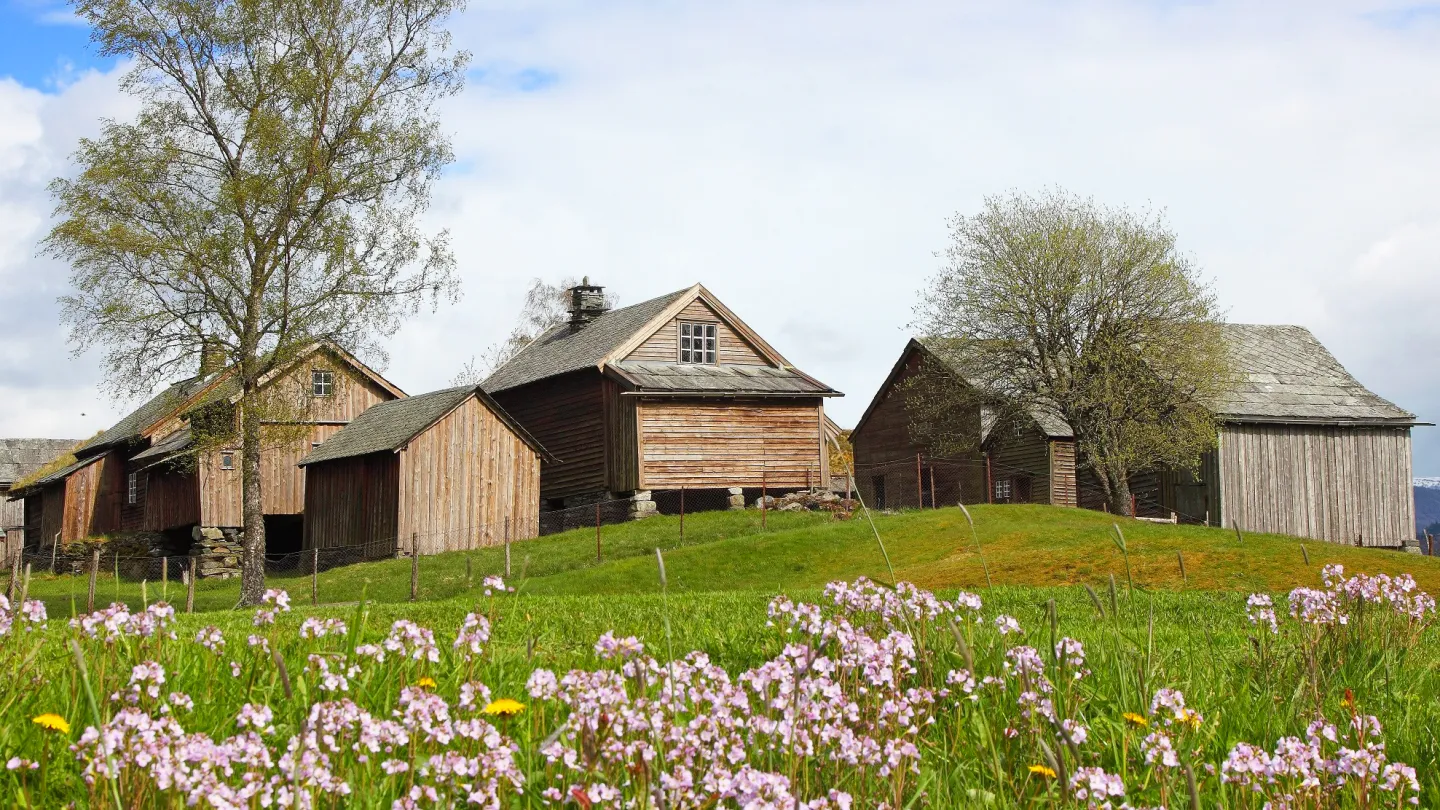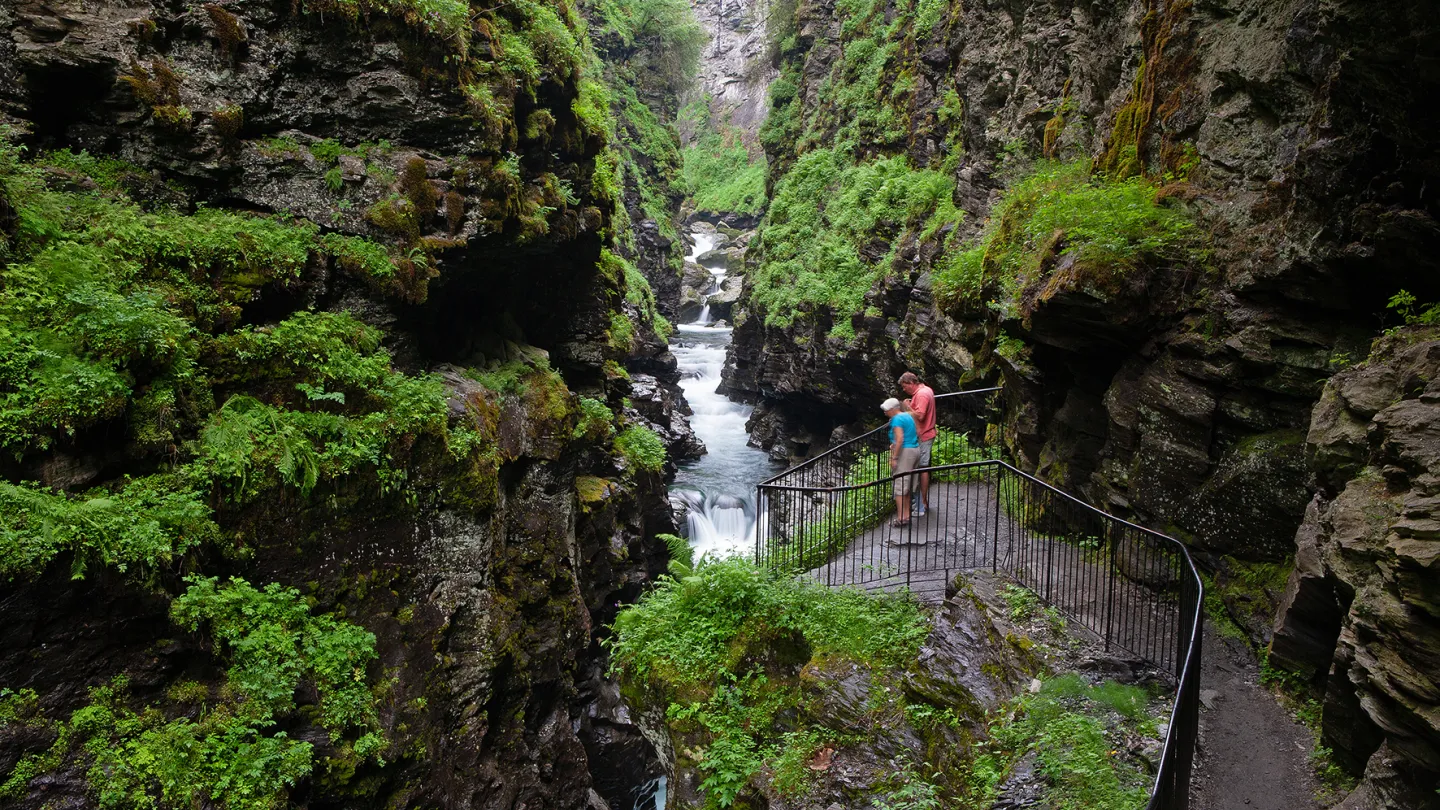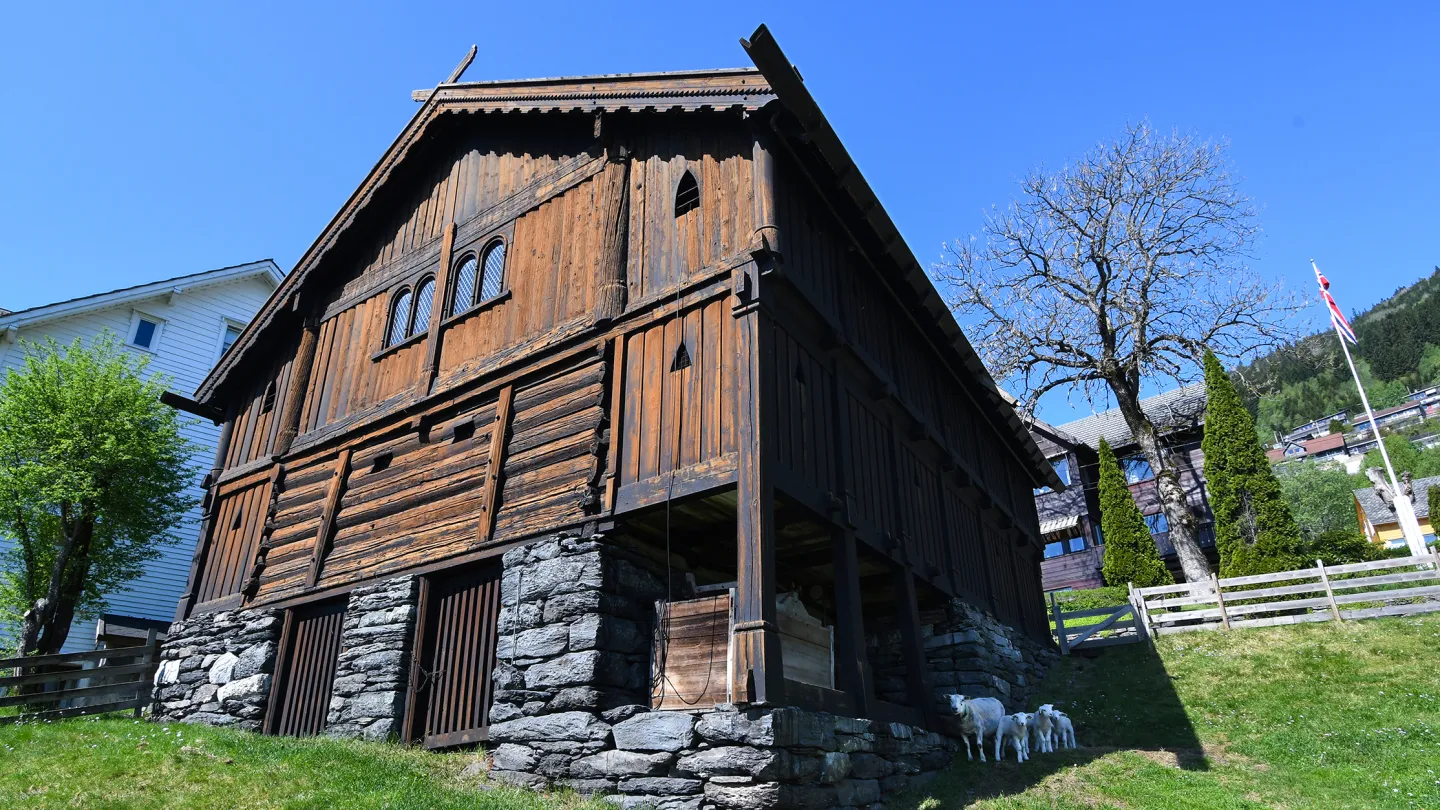Voss - A Village of Diversity
Text by Eirik Helleve, Voss Folk Museum
Over the past 500 years, Voss has undergone significant changes - just like rural communities throughout Norway. One of the biggest turning points came with the opening of the Voss railway line in 1883. In more recent decades, outside influences have shaped the area, with jazz and extreme sports standing out. In particular, the extreme sports scene has helped make Voss the diverse and dynamic place it is today.
For a long time, Voss was a traditional farming community, deeply rooted in its own customs and way of life. Change came slowly. Most residents were engaged in agriculture, and each farm typically housed several family units clustered together in a shared courtyard. These small communities were nearly self-sufficient, growing their own food and making the tools and buildings they needed. Only a few items like salt had to be bought elsewhere, usually in Bergen or Granvin.
Vangen served as the village center, mainly because of the church. Vangskyrkja was completed in the late 1270s, and the rectory was located nearby. Aside from that, there were few buildings in the area. In 1801, the population of what is now Voss municipality was about 10,000, only 200 of whom lived in Vangen.
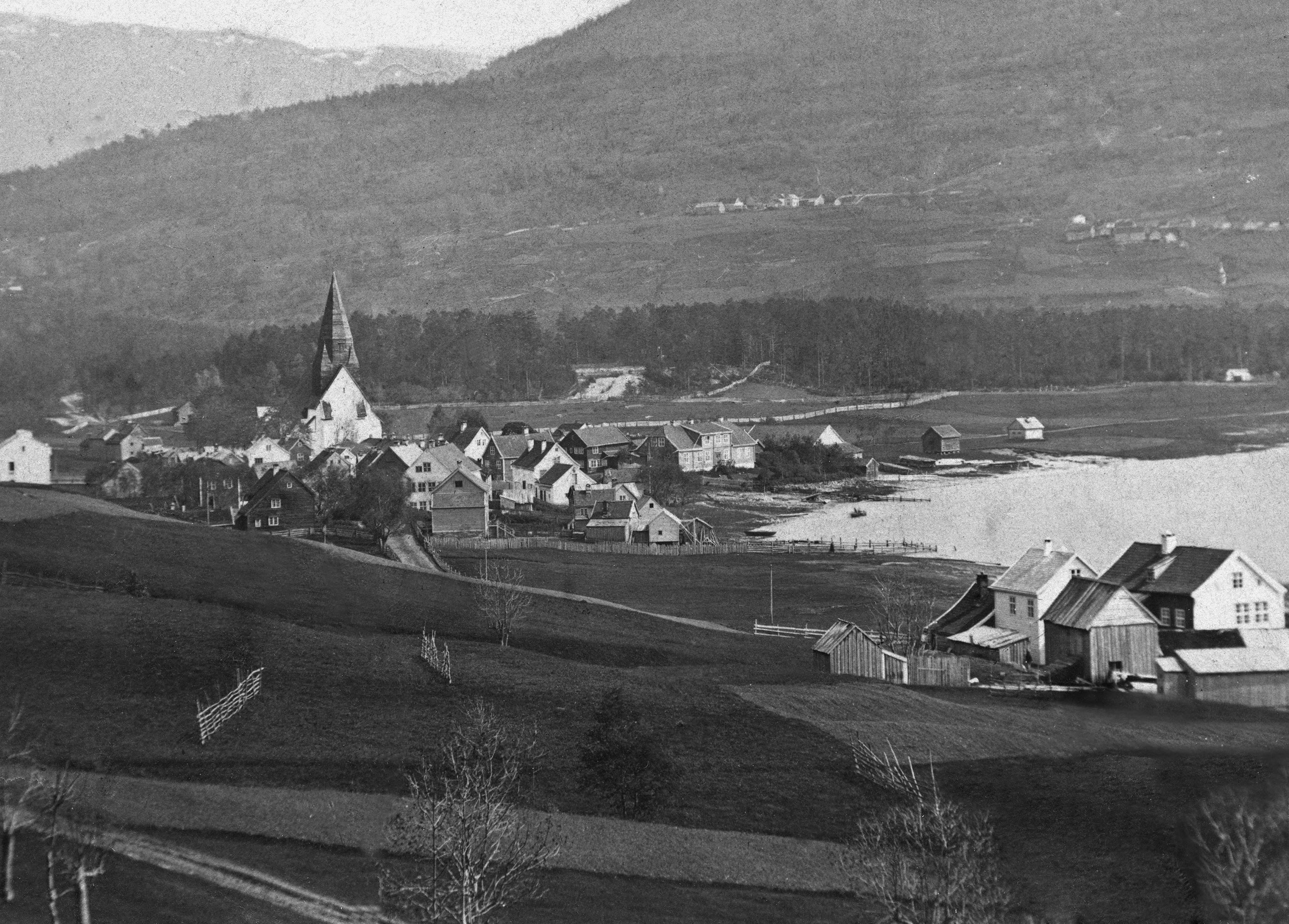
Poto: Vangen, Voss town center, 1874. (Credit: Berent Anker Carstens/Voss folk museum)
From around 1800, the population of Voss began to grow, mainly because people were living longer. However, there wasn’t enough economic opportunity to support such growth, and many chose to emigrate to America. The first family left Voss in 1835, and the village went on to become one of the areas in Norway with the highest rate of emigration. Over the next fifty years, around 5,000 people from Voss moved to the United States. Still, the population in Voss remained stable during this time, thanks to the high birth rate.
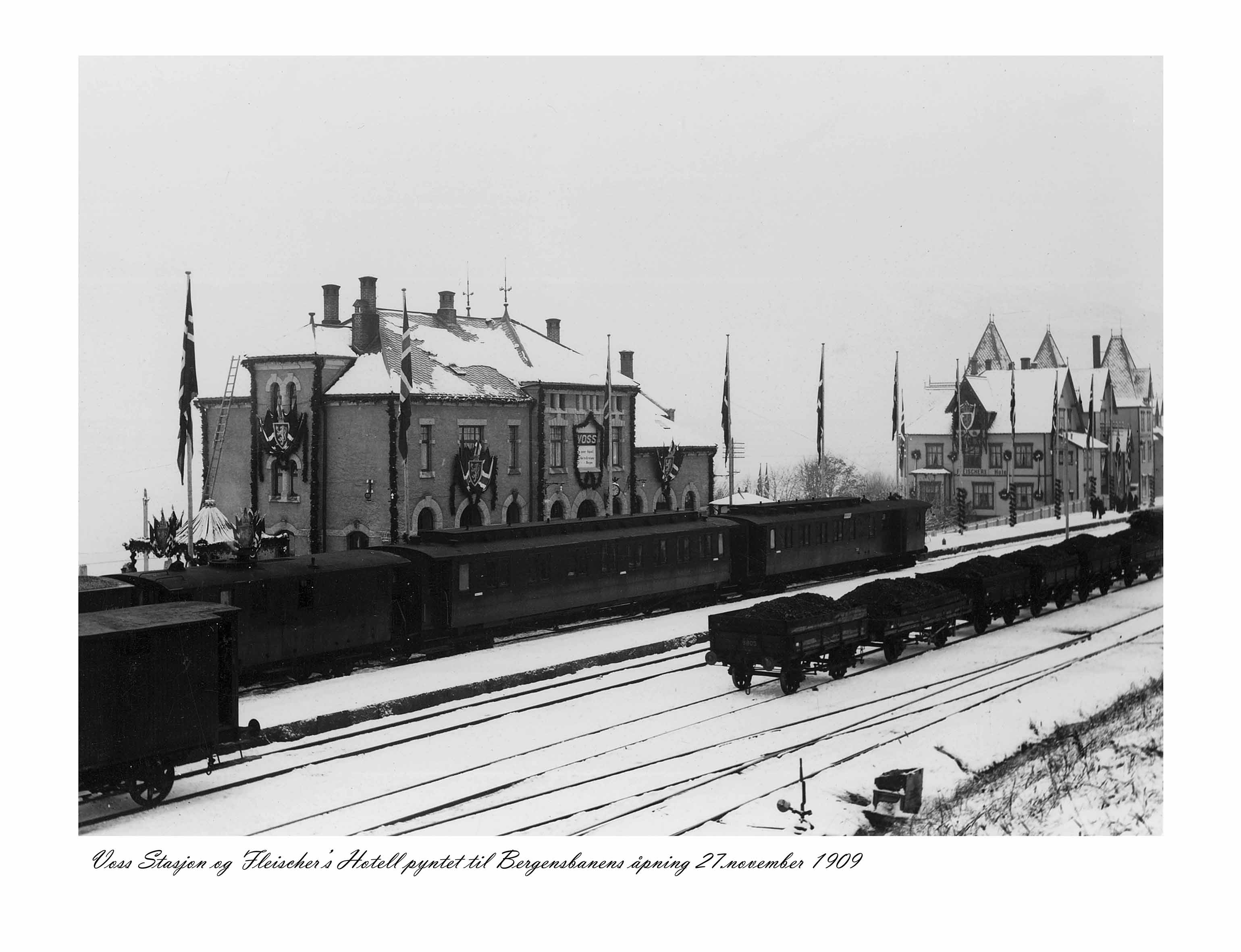
Poto: Voss station at the opening of Bergensbanen railway, 1909. (Voss folk museum)
The major turning point for the local community came in 1883, when the railway reached Voss. In July of that year, the Voss Line between Voss and Bergen opened. This made it much easier to transport goods in and out of the village - and it became even more accessible when the Bergen Line (between Bergen and Oslo) opened in 1909.
Voss Skiferbrud (the slate quarry) was established in 1895 and became the village’s largest employer for several decades. They shipped large quantities of slate tiles to Bergen, where they even had their own storage yard. Other businesses also thrived thanks to the railway. Bulken Dairy was founded in 1885, and within a year, they were delivering 200 tons of milk to Bergen.
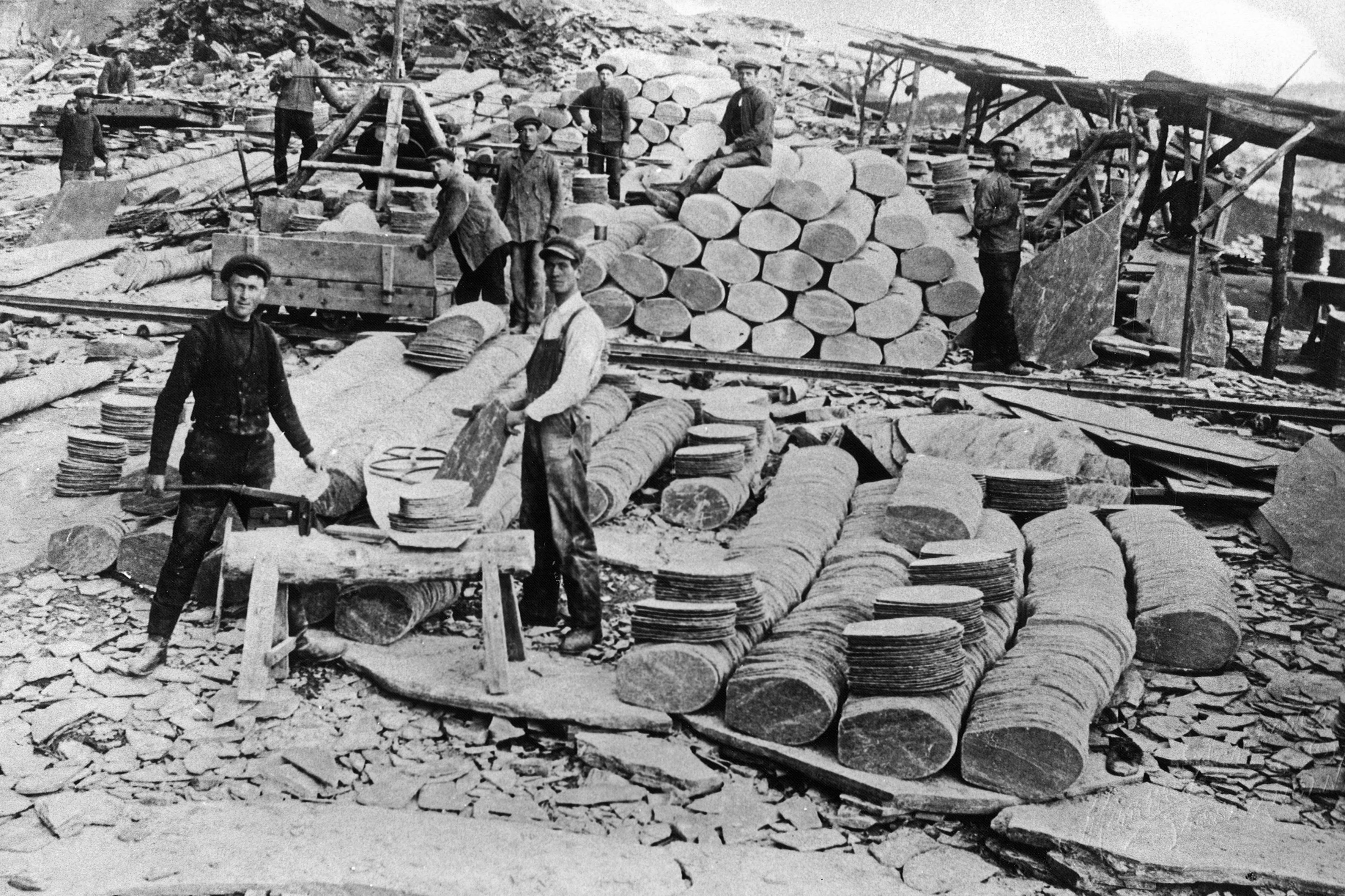
Poto: Cutting Slate at the Quarry in Nesheim, ca. 1910. (Johan von der Fehr/Voss folk museum)
The railway also made it much easier for people to travel to Voss. Over time, the village developed into an education hub. In 1895, Voss Folk High School opened and went on to become the largest non-religious folk high school in Norway for many years. In 1916, the country’s first public secondary school (landsgymnas) was established in Voss.
The military on the west coast of Norway had long held their training exercises in Vik in Sogn, but after the railway opened, these were moved to Voss. Military camps were established at Tvildemoen and Bømoen.
The railway also brought more tourists to Voss, and the village served as a convenient gateway to both Sogn and Hardanger. While hotels existed before the Voss Line opened, the following decades saw a surge in new hotels throughout the area. In Vangen, Fleischer’s Hotel played a key role - especially after a new hotel building was completed in 1889. Closer to the village center were Vossevangen Hotel and the Mission Hotel. Outside the center, Stalheim Hotel became the largest and most prominent hotel, particularly from the 1930s onward.
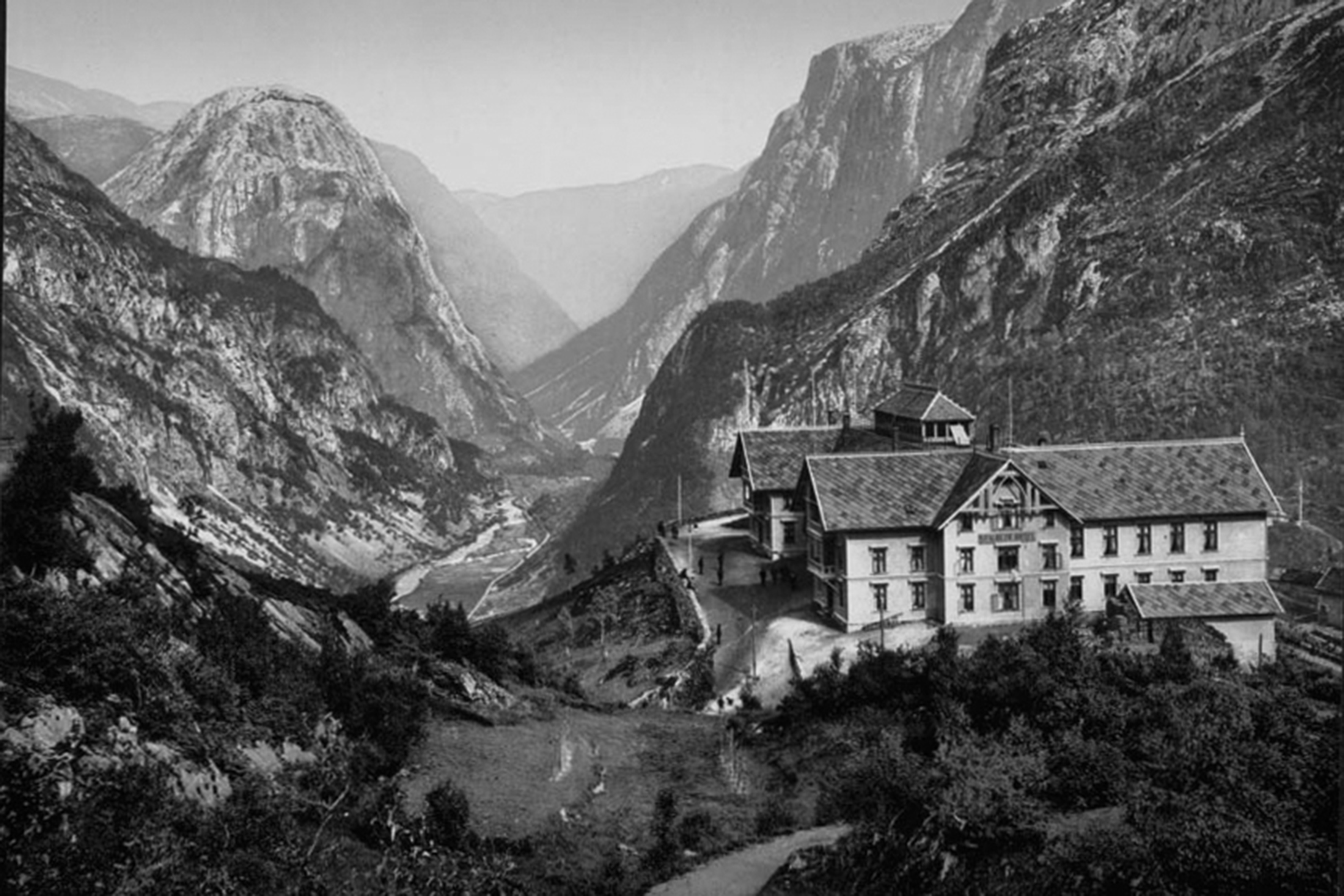
Poto: Stalheim hotel, 1892. (Voss folk museum)
When the Voss Line opened in 1883, Vangen was still a small village center. Almost all of the buildings were located between the church and the train station. In the early decades of the 1900s, Vangen began to grow and developed into a charming rural town, centered around a single main street.
That all changed in 1940. Norway was invaded by Germany on April 9, and two weeks later, Vangen and parts of the Voss area were bombed over the course of three days. Nine lives were lost, and more than 150 buildings in Vangen were destroyed.
Shortly after the bombing, a competition was announced to create a new zoning plan for Vangen. By June 1940, a winner had been chosen. The winning proposal came from architect Leiv Tvilde and architecture student Arne Berg, both from Voss. Their plan introduced two main thoroughfares through the village. Reconstruction began in earnest after the war, and Leiv Tvilde went on to design many of the new buildings in Vangen. His work played a key role in shaping the harmonious village center that defined Vangen for the decades that followed.
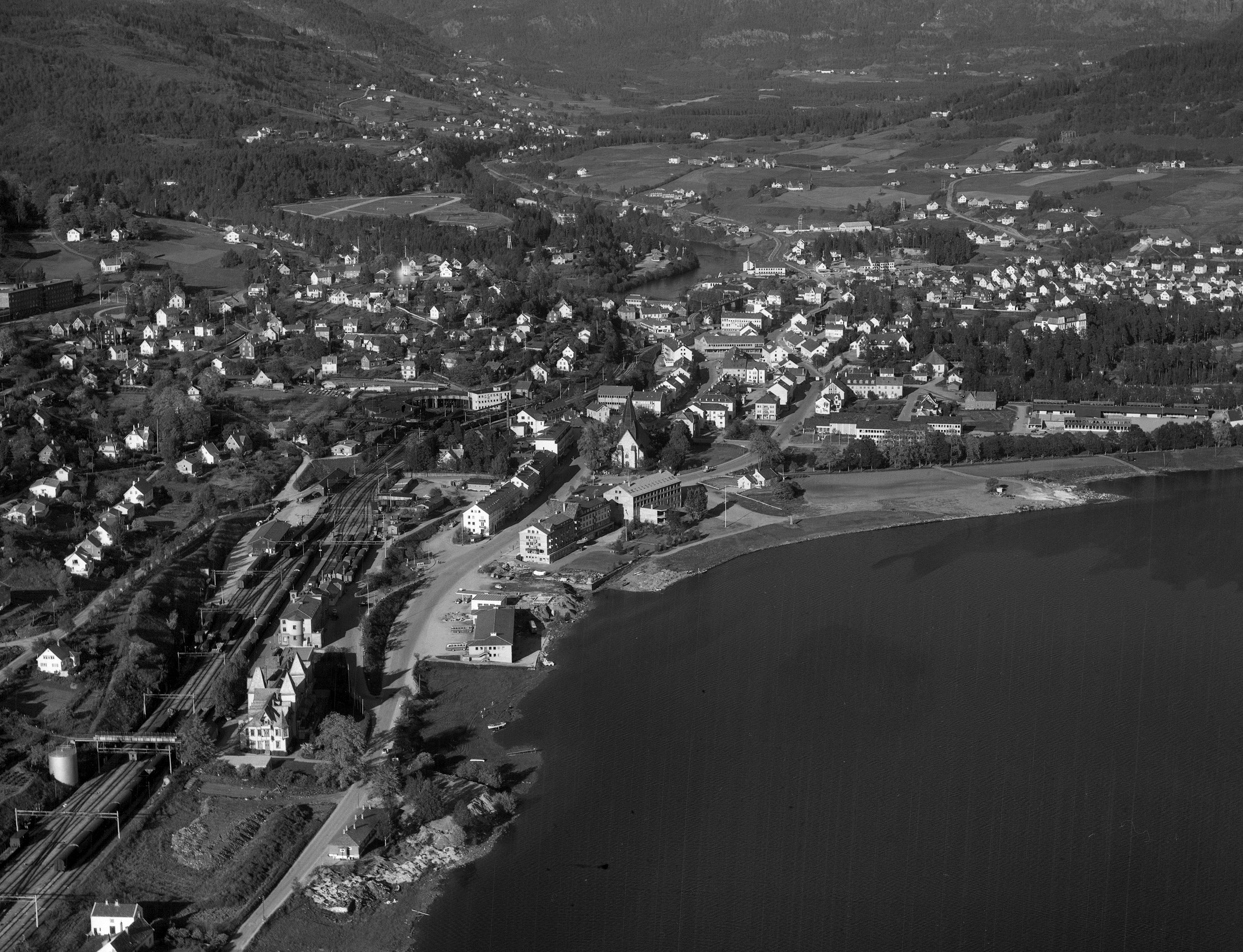
Poto: Vangen after the reconstruction, 1963. (Widerøe/Voss folk museum).
In the second half of the 20th century, the world truly arrived in Voss. More tourists began visiting, and the community became increasingly influenced by outside trends. Agriculture remained the dominant industry, but not to the same extent as before. Tourism grew steadily, and it also became much more common for locals to travel abroad on holidays.
Today, Voss hosts a wide range of festivals, both large and small. Some celebrate traditional Voss culture, such as samlahove (sheed heads/food culture) or folk music, while others focus on something entirely different. Vossa Jazz has been held every year since 1974. Ekstremsportveko, first organized in 1998, is now the largest extreme sports festival of its kind in the world. Voss Cup is a football tournament for children aged 7 to 12, drawing 7,000 young players to the village every year.
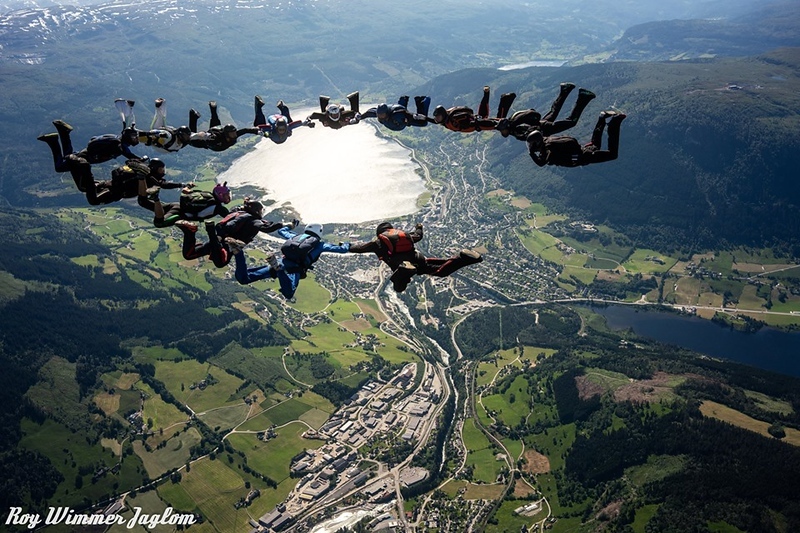
Poto: Skydivers over Voss during the Extreme sports festival 2019 (Roy Wimmer Jaglon)
Vangen has certainly grown in size and importance, but that doesn’t mean the rest of the municipality isn’t just as valuable. Both Raundalen and Myrkdalen offer excellent conditions for outdoor activities, with many cabins located in both areas. The municipality itself has also expanded in recent years. In 1964, the three municipalities of Evanger, Vossestrand, and Voss merged under the name Voss Municipality, and in 2020, this larger municipality merged with Granvin.
The story of how Voss became what it is today is told in the exhibition "A View at Voss" at Voss Folk Museum, which opened in the summer of 2021. The exhibition covers the last 500 years, from the Middle Ages to the present day. Here, you’ll find everything from folk costumes to skydiving suits, traditional Hardanger fiddle music and modern rock, and portraits of fifty people who have shaped or stood out in the community.
The exhibition ends with a quote from skydiver Anna Moxnes from Wales:
"Apart from the fact that it’s so beautiful here that you keep coming back: Voss is truly special to me because it’s a small place with limitless space for dreams and ambition... this speaks to me. In Voss, people both CAN and ARE ALLOWED to make anything happen... this is a place where wild ideas are embraced, and campions are made."
The Voss Culture
There is so much culture to experience in Voss. You can look at street art in town, go to exhibitions or join an art walk. You can experience old culture and history at the old farms dating back to the Viking age. The Voss culture is also extreme sport and festivals, hikes with or without skis, the gondola and last but not least local food and shopping in the city center. Experience the Voss culture!
History, galleries and museums
Festivals in Voss
The festivals hosted in Voss are very important to the town and the rest of the world. People travel from near and far to experience nature, culture, and vibe during festivals like Vossa Jazz and Ekstremsportveko.
Activities
You haven't been to Voss if you haven't been on a hike or chased fresh powder! Voss Gondol makes the mountains available to everyone and in Myrkdalen they even teach sit-ski. In Voss, both nature and adrenaline are available to all. Read more about it here: Voss - for everyone. Here are some activities you should include when visiting Voss:
Voss for foodies
There are several great restaurants and dining experiences you need to try when visiting Voss. An increasing number of restaurants focus on local dishes and locally sourced goods. If you are a true foodie you should try sheep head at Smalahovetunet or visit the world-known wine cellar at Park Hotell. Here is a selection of restaurants and cafés with at least 25% local food on the menu:



